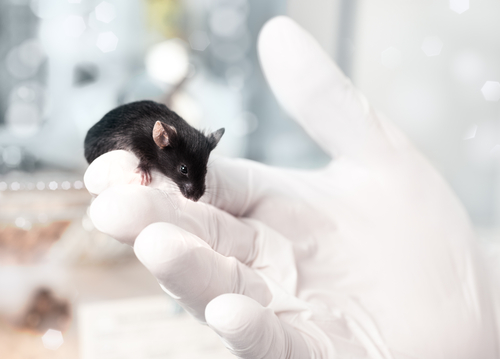New Mouse Model May Advance Understanding of Mitochondria Protein Production and Dysfunction, Researchers Say

A new mouse model may help scientists deepen their knowledge about mitochondria, the cell compartments responsible for the production of energy in the body, as well as their understanding about certain diseases, including mitochondrial disorders and diabetes.
The disease model, called MitoRibo-Tag mice, allowed researchers to study, for the first time, mitoribosomes — special ribosomes (small structures responsible for the production of proteins) found inside mitochondria.
Its creation was described in the study, “MitoRibo-Tag Mice Provide a Tool for In Vivo Studies of Mitoribosome Composition,” which was published in Cell Reports.
Mitochondria are the so-called “power plants” used by all cells in the body to convert energy from nutrients into molecules that cells can use as fuel.
When mitochondria malfunction — for instance, in certain inherited mitochondrial diseases or even during the normal aging process — energy production becomes less efficient, which may affect several organs, especially those that have higher energy demands such as the brain, heart, muscle, liver, and kidneys.
“It is crucial to unravel how mitochondrial function is regulated in order to better understand these disorders and develop new treatment strategies,” Nils-Göran Larsson, MD, PhD, a professor at Karolinska Institutet in Sweden and lead author of the study, said in a press release.
To perform their function, mitochondria produce their own proteins using mitoribosomes, which are different from the normal ribosomes that are responsible for producing proteins in cells. Despite advancements in recent years, scientists still do not fully understand how these mitoribosomes work to control the production of mitochondrial proteins in different contexts.
That, however, might change after a group of researchers from the Karolinska Institutet developed the MitoRibo-Tag mouse model, which may allow them to identify the proteins that interact and control the activity of these mitoribosomes.
The researchers said that they “generated MitoRibo-Tag mice as a versatile tool to study mitoribosome composition and the mitoribosome-interactome in different mouse tissues in vivo.” The mitoribosome-interactome refers to the group of substances or compounds that interact with mitoribosomes at the molecular level.
These MitoRibo-Tag mice were genetically engineered to produce mitoribosomes that are attached to a small tag sequence that the researchers can isolate from the mitochondria and then study the proteins that are attached to them.
Using this approach, they identified and quantified 81 of the 82 proteins that make up mitoribosomes that were isolated from mitochondria found in the liver, kidney, and heart. In addition, they also discovered several proteins of unknown function that were closely associated with these mitoribosomes and that may also regulate the production of mitochondrial proteins.
“We believe that the MitoRibo-Tag mice will be a valuable tool for future studies of how mitochondrial protein synthesis is affected by disease, pharmacological interventions, aging and different physiological situations such as exercise, caloric restriction and high-fat diet,” said Miriam Cipullo, a PhD student in medical biochemistry and biophysics at the Karolinska Institutet, and co-author of the paper.






